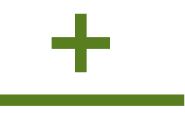Modularization, or skid-mount construction, is increasing in popularity and demand as an alternative to traditional construction. This approach involves relocating large portions of an industrial project from a construction site to a controlled environment, such as a fabrication shop. And it can provide several benefits, including high-quality structural integrity as well as significant efficiencies. General estimates suggest that implementing modular process systems where possible can save up to 25% on total project costs.
This article will clarify common misconceptions about modular construction cost savings. It will consider this approach's practical and financial advantages when applied in specific use cases, such as projects in remote locations or with poor or restricted access to labor on site.
It’s also important to note that traditional construction is still the preferred method for larger projects that require extensive on-site construction. Deciding between a traditional, modular, or hybrid approach should involve an assessment of your capital project’s goals, challenges, and requirements. H+M Modular can support any of these execution methods.
How Does Modular Construction Save Money?
Modular construction is increasingly recognized for its cost-saving potential (up to 25% of total project costs). This process can sometimes, depending on the project, minimize labor and material waste, with a controlled environment that enhances material use and reduces time and money spent on on-site labor and construction.
Modular construction can also be especially valuable in today’s labor market, where it can be difficult to find and retain skilled workers. Modularization’s efficiency, less waste, and reduced weather-related challenges can provide savings in some cases. However, the extent of the savings will depend on specific project requirements and challenges.
How Much Time Does it Save?
The on-site construction process involves assembling pre-fabricated modules encased in steel frames and connecting them to essential services or other modular units. This process is typically handled by smaller teams with rapid assembly.
For some capital projects, this approach can outpace traditional construction. Acceleration is primarily due to the pre-fabrication of components in a controlled factory setting, which reduces the volume of on-site work required, or allows on site work to occur simultaneously, while eliminating and reducing potential delays (such as rework).
Is Modular Construction Better?
It’s important to recognize that traditional construction is still the preferred method of approach for large capital projects that require on-site work. Modularization can only be considered to be advantageous when applied to overcome specific challenges.
Modularization’s advantages center on efficiency, quality control, and predictability. Identifying optimal levels of modularization and how the approach will align with overall project development should be key considerations. It’s highly recommended to conduct a thorough assessment to ensure that modularization maximizes benefits while meeting your project's specific requirements and goals.
H+M Modular Construction Cost Savings
Modular construction can be a viable alternative to traditional construction in some cases, leading to benefits such as cost savings, time efficiency, and quality control. However, it can also pose design adaptation and logistical challenges. Working with the right EPC contractor with significant design-build experience will help ensure your project benefits from taking the right approach.
Detailed planning and expertise across multiple engineering disciplines are required to realize the benefits of modularization. Front-end planning, 3D modeling, fabrication, procurement, and logistics are all part of making the approach as efficient and effective as possible.
H+M Modular specializes in providing exceptional capital project execution from concept to start-up for clients across the United States. For over three decades, we have provided end-to-end solutions for a wide range of project sizes within the energy, chemical, and terminals and logistics industries.
We are dedicated to providing trust, experience, and efficiency through all stages of engineering, procurement, and construction through our proven strategic EPC approach. Our comprehensive services, including front-end planning, detail engineering and design, procurement, fabrication, and construction allow us to take your project from conception to completion, tailoring engineering and design solutions to meet your unique needs.

The H+M Industrial Team
For over three decades, we have provided best-in-class capital project management services to Energy and Chemical industries through our proven EPC approach. We are dedicated to providing trust, experience, and efficiency through all stages of engineering, procurement, and construction--on budget and on time.

Partnering with H+M Modular
H+M Modular, a division of H+M Industrial EPC, specializes in custom fabricated equipment, modules, and skids for energy and chemical industries. The approach emphasizes the potential for decreased risk through more controlled fabrication, leading to enhanced quality and safety, reduced labor costs and construction times, improved labor availability, and solutions to geographic challenges. We are dedicated to providing trust, experience, and efficiency through all stages of traditional and modular construction projects using our proven EPFC approach, If you're considering modular fabrication, we invite you to connect with us to learn about how modular solutions can improve project outcomes.





